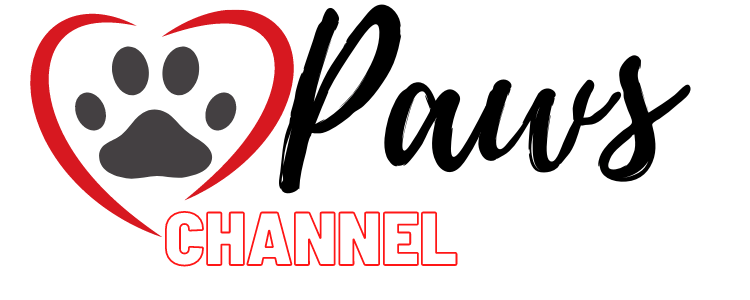Cat food is often not very digestible for house cats and is partly responsible for diseases. This is due to the composition and the inadequate labeling of the feed.
Almost 15 million cats live with us humans in Germany. This makes cats the most popular pets. However: how is a cat properly fed?
In a current test, the Stiftung Wartentest has once again confirmed that certain types of food are anything but digestible for house cats. In the worst case, the food is harmful to the health of the cats and is jointly responsible for diseases.
Experts call for no dangerous substances in cat food
For a long time, veterinarians, including those at the Department of Animal Nutrition at the University of Munich , have been calling for a complete declaration and the avoidance of hazardous substances in feed. But the industry refuses.
But which food is right for the cat, given the abundance of food on offer? And in what amount? Canned or dry grains? Raw meat feeding or, on the contrary, even meat-free? In general: cats are and will remain carnivores, eating them vegetarian or even vegan equates to cruelty to animals.
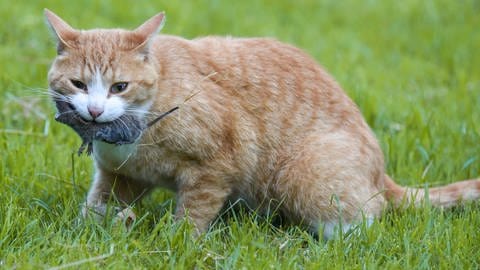
Cats are naturally carnivores. From the point of view of experts, feeding cats vegan is not a good idea.
Main content in cat food: animal and vegetable by-products “
But anyone who thinks that there is only meat in ready-made feed is seriously mistaken. “With chicken” or “with beef” means: The legally prescribed minimum value for pure meat is adhered to. But that’s just a meager four percent. This amount must also be stated in the small print on the back of the pack.
But then the manufacturers’ willingness to provide information is over. The main part of the feed is made up of so-called “animal and vegetable by-products”. “These are offal, blood, bone meal, hides, feathers and shredded day-old chicks,” says Stefanie Schindler, specialist at the Federal Association of People for Animal Rights. “It is clear that there is no open declaration, nobody would buy that anymore!” Says Stefanie Schindler.
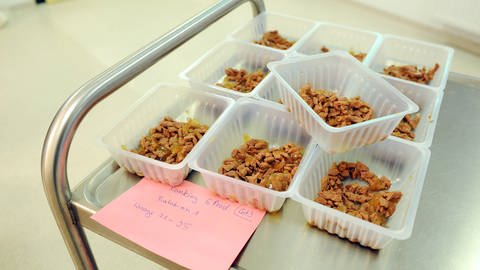
Feed samples in a large pet food producer.Imago imago images / Michael Bahlo
Industry defends itself against accusations in court
This is also confirmed by Dr. Hans Ulrich Grimm, Spiegel journalist, operator of the blog “Dr. Watson – The Food Detective ”. According to Grimm, the most important information is often missing on the labels. The incomplete declaration does not help the pet owner at all. His book “Cats would buy mice – how the feed industry makes our animals sick” did not take the animal feed industry into account.
“The industry, of course, wasn’t that enthusiastic about this book. They wanted to prevent it.
“A large corporation, manufacturer of whiskas and chappi, tried to get an injunction to get the book off the market, but unfortunately that failed,” says Dr. Grim.
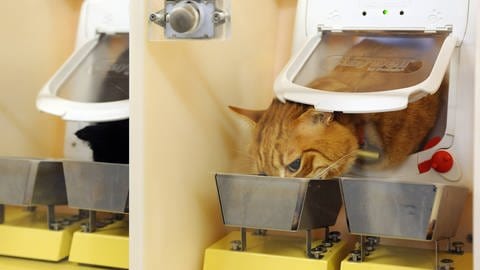
Cat food is of course also tested on cats. What might taste good doesn’t necessarily have to be healthy.Imago imago / Michael Bahlo
Feed regulation is to be improved at EU level
The reason for the fact that consumers and animals can be deceived and left in the dark is the fact that the legislation is far too weak. However, the feed regulation is now to be improved at EU level. The “list of things to know about pet food” , which can be found on the Internet site of the industry association for pet supplies and written together with “experts”, is also not very helpful . Who these experts are remains in the dark.
Animal feed often contains unsuitable fillers
In this context, Grimm and others do not generally oppose the use of slaughterhouse waste suitable for consumption in finished feed – if it were only slaughterhouse waste. The main criticisms are inappropriate ingredients that have absolutely no place in animal feed. Cereals, for example, as a cheap filler that can lead to obesity and diabetes. Or sugar, which damages the teeth. Especially when the cat is only getting ready-made food.
Therefore, according to the veterinarian Stefanie Schindler, one has to look at the cat as a biological mechanism. Cats usually catch mice or birds. That is also the dental care of the cat.
All of these structures are completely absent in the finished feed. Which then causes the cat to develop tartar. If there is periodontal disease, the cat’s teeth begin to wobble and then it no longer eats.
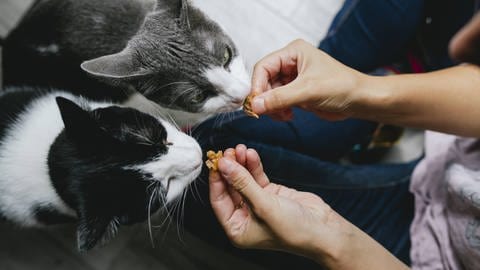
Too little natural food can also be harmful to cats’ teeth.Imago imago / Westend61
Overdose of phosphorus can lead to kidney failure in cats
Schindler names phosphorus as an extremely problematic, even life-threatening ingredient in animal feed. Actually a vital mineral for cats. However, too much phosphorus in cat food is one of the most important causes of kidney failure in cats. “If a food does not provide the right mix of nutrients, it can have dramatic consequences for the cat,” says Nicole Merbach from Stiftung Warentest. The cats could then get an oversupply or undersupply of essential nutrients. For Merbach, this is a risk: “If a food provides too much phosphorus, a cat can actually develop kidney disease. And kidney diseases are particularly widespread in older cats.”
Phosphate content in cat food is usually not specified
Kidney failure is the number one cause of death in cats. Nevertheless, the manufacturers continue to add far too much phosphate to the feed – without having to specify the quantities. Phosphate binds water and gives the feed more volume. It looks like more than it is. Canned and pouched food consists of up to 80 percent moisture. Information on the phosphate content is only very rarely found on the packaging.
There is also no word about the phosphate content or the harmfulness of overdosing on the website of the industry association for pet supplies . The lobby association speaks only vaguely of technical aids that are supposed to make the product “more appealing”. Without phosphorus, a rather unsavory broth would settle in the animal feed. The phosphorus also increases the durability and also ensures a beautiful color.
Regular health check-ups for domestic cats
The veterinarian Stefanie Schindler does not have a magic formula, especially for city and house cats. Raw meat feeding – the so-called barfen – would be an alternative. However, this requires some knowledge of the exact nutritional requirements. And if you don’t want to get everything from the butcher yourself, you need a reputable manufacturer of raw meat products.
However, if you want to continue to use ready-made feed or have to due to time constraints, you should study the ingredients very carefully – if specified. And don’t forget: have your cat checked regularly, at least once a year. On diabetes, obesity, tooth damage and kidney health.

